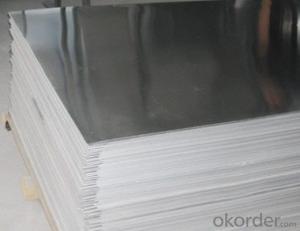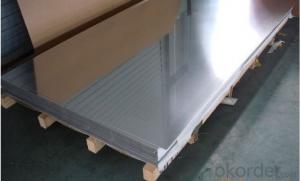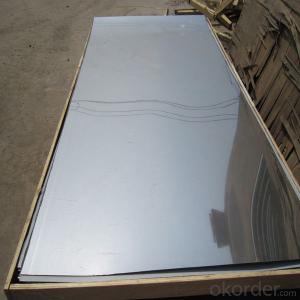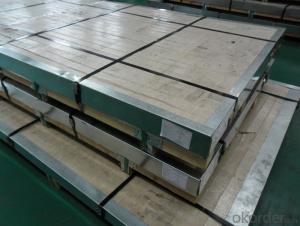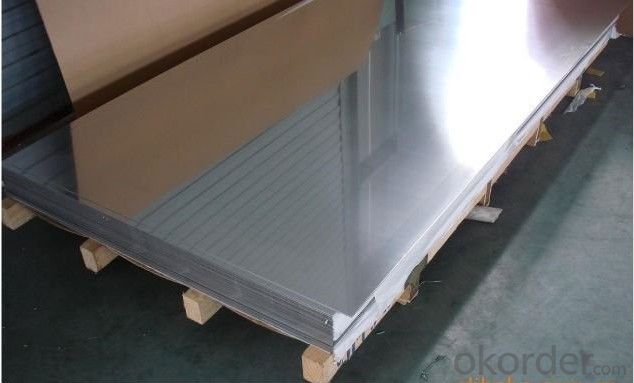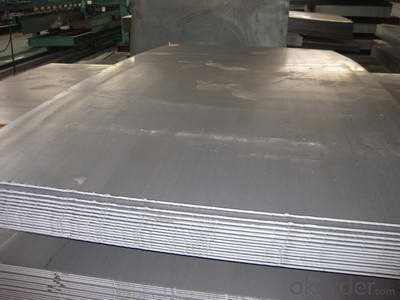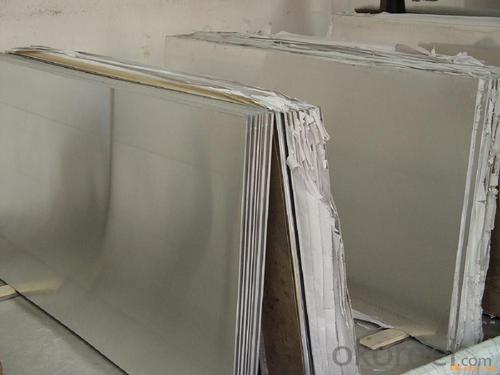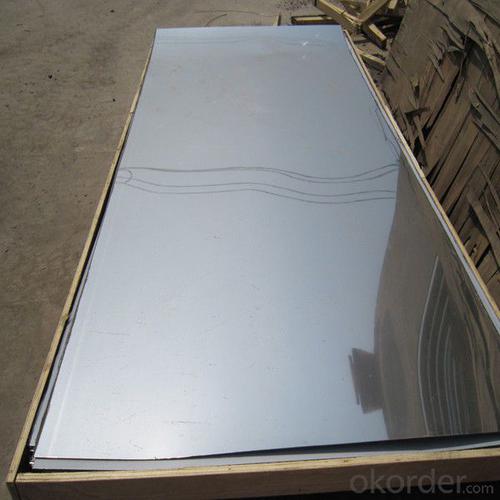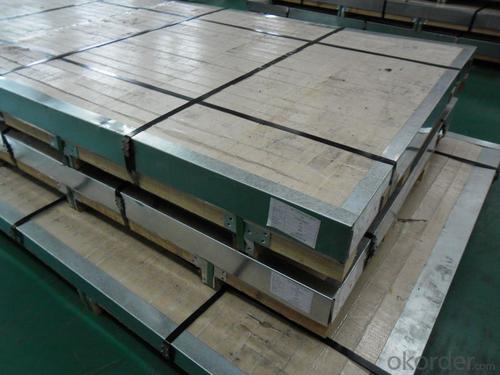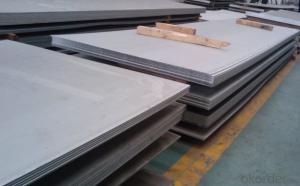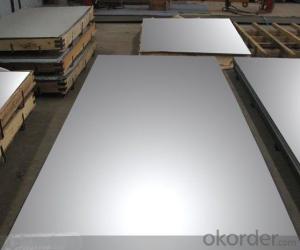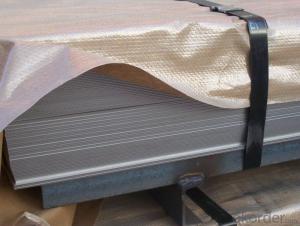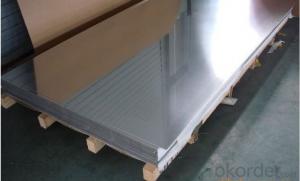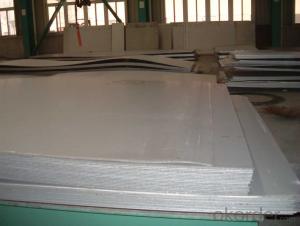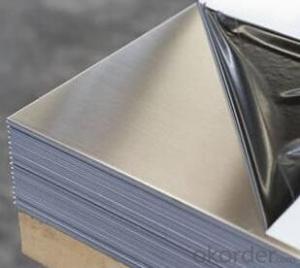Stainless Steel sheet 316 with No.4 Surface Treatment
- Loading Port:
- Shanghai
- Payment Terms:
- TT OR LC
- Min Order Qty:
- 500 m.t.
- Supply Capability:
- 5000000 m.t./month
OKorder Service Pledge
OKorder Financial Service
You Might Also Like
Hot sale stainless steel sheet 201/202/304/304l/310S/309S/316L/316Ti/316/316l/321,410/420/430/444/443/409L, and 904L.
Description of Stainless Steel Sheet:
Description | steel sheet,hot rolled steel sheet,cold rolled steel sheet, steel sheet,sheet,steel plate |
Standard | ASME, ASTM, EN ,BS,GB,DIN, JIS etc |
Application | Steel sheet applies to construction field, ships building industry, petroleum & chemical industries, war and electricity industries, food processing and medical industry, boiler heat exchanger, machinery and hardware fields. |
Packaging | Standard export sea-worthy packing |
Delivery time | 10-30 days |
Quality | No.1 |
Productivity | 500 tons/Day |
Note | Our company has cooperative relation between the domestic agents. Stainless steel sheet can be made accordingto the customers requirements. Fasten delivery. Quality assured. |
Contacts | If you have any question,please feel free contact me. |
Stainless steel sheet surface finish characteristics
Surface finish | Characteristics and application |
2B | The surface brightness and flatness of no2B is better than no2D. then through a special surface treatment to improve its mechanical properties,No2B could nearly satisfy comprehensive uses. |
No.1 | Polished with abrasive belt of grit#100-#200, have better brightness with discontinuous coarse stria, used as inner and external ornaments for building, electrical appliances and kitchen utensils etc. |
No.4 | Polished with abrasive belt of grit #150-#180,have better brightness with discontinuous coarse stria, but thinner than No3, are used as bathtub buildings inner and external ornaments electrical appliances kitchen utensils and food processing equipment etc. |
HL | Polished with abrasive belt of grit #150-#320 on the NO.4 finish and has continuous streaks, mainly used as buildings ornaments elevators, door of building, frontal plate etc. |
BA | Cold rolled, bright annealed and skin-passed, the product have excellent brightness and good reflexivity like mirror, kitchen apparatus, ornament etc. |
8K | The product have excellent brightness and prefer reflexivity can to be the mirror. |
Main Features of stainless steel sheet :
•Escalator, Elevator, Doors
•Furniture
•Production tools, Kitchen appliances, freezers, cold rooms
•Auto Parts
•Machinery and Packaging
•Equipment and Medical devices
•Transport system
Product Details:
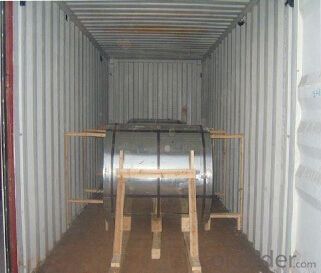
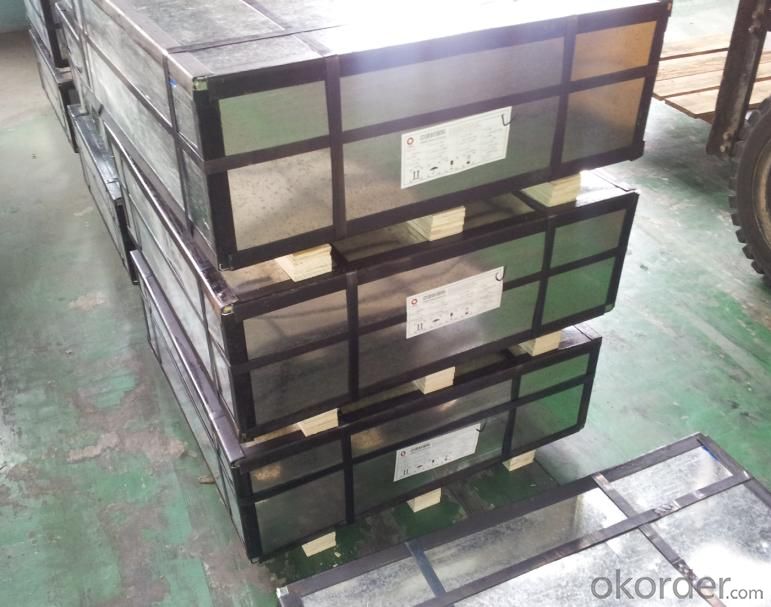
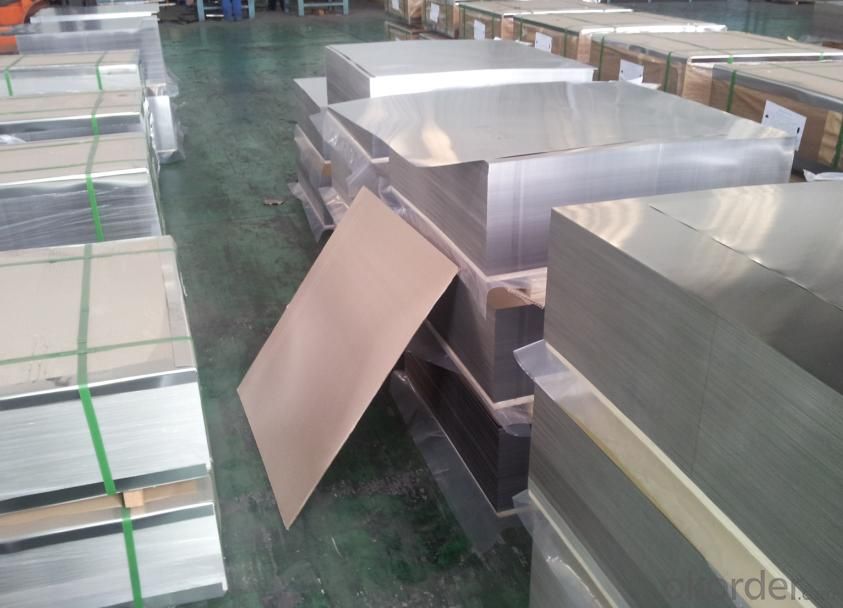
Sandard Seaworth Packing(wooden packing with water proof paper)
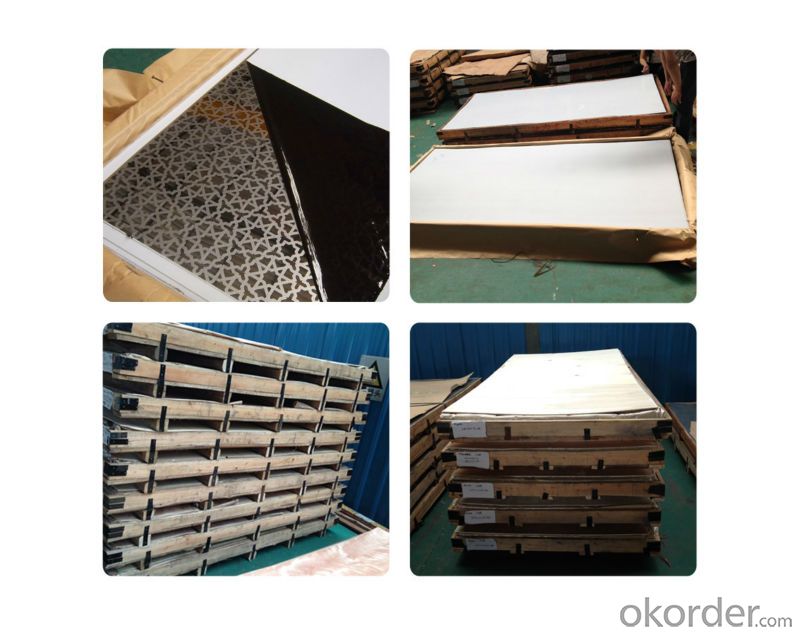
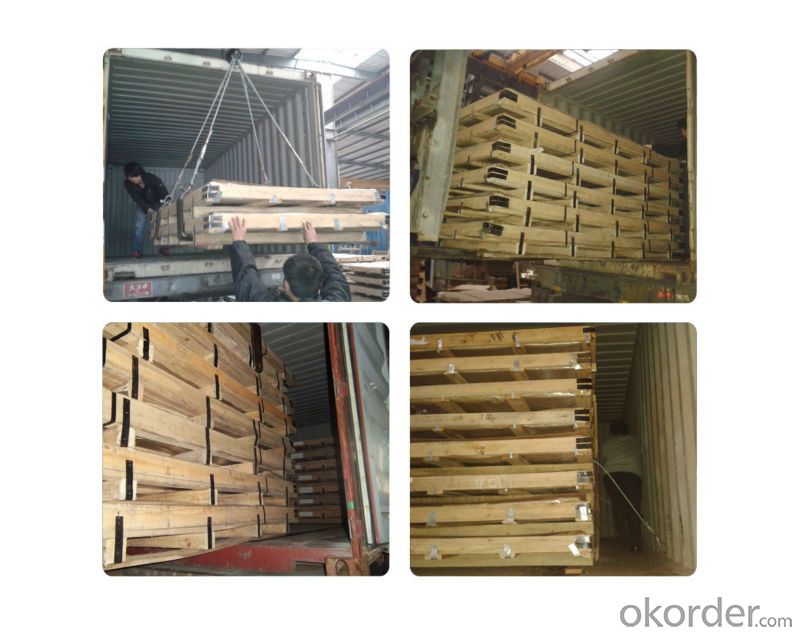
FAQ:
1. What's the quality?
very fine
2. How long get reply?
within 24 hours
If you have any question about stainless steel sheets,donot forget to sending the email to Us! You will get the competitive Price and have a very good experience about the Buying Process! CNBM International Corporation is always your trustful friend!
- Q: What are the different thickness tolerances for stainless steel sheets?
- The different thickness tolerances for stainless steel sheets can vary depending on the specific grade and type of stainless steel being used. Generally, the industry standard tolerances for stainless steel sheets range from +/- 0.005 inches to +/- 0.010 inches for thinner sheets, and from +/- 0.010 inches to +/- 0.015 inches for thicker sheets. These tolerances ensure that the thickness of the stainless steel sheets remains within an acceptable range for various applications, including construction, automotive, and manufacturing industries. However, it is important to note that specific tolerances may vary depending on the manufacturer or supplier, as well as the intended use of the stainless steel sheets. Therefore, it is always advisable to consult the relevant specifications provided by the manufacturer or supplier to determine the exact tolerances for a particular stainless steel sheet.
- Q: Can stainless steel sheets be used for decorative panels?
- Certainly! Decorative panels can definitely utilize stainless steel sheets. Stainless steel possesses exceptional qualities like durability, strength, and corrosion resistance, rendering it a splendid option for decorative purposes. Due to its aesthetic appeal, stainless steel finds extensive use in interior design, architecture, and diverse industries. To create distinctive and visually captivating decorative panels, stainless steel sheets can be tailored with a variety of finishes such as brushed, polished, or patterned. Furthermore, stainless steel sheets can be easily fashioned, cut, and shaped into various designs, ensuring their versatility for different decorative applications. Be it for wall cladding, elevator interiors, furniture accents, or signage, stainless steel sheets lend a contemporary, refined, and sophisticated appearance that enhances the overall aesthetics of any given space.
- Q: How high is the temperature of 2520 stainless steel?
- 310S stainless steel austenitic chromium nickel stainless steel has good oxidation resistance, corrosion resistance, because the higher percentage of chromium and nickel, which has much better creep strength, can continuously work under high temperature, good heat resistance, softening temperature is more than 800[1], and the allowable stress continued to decrease, the highest use temperature of 1200 DEG C.
- Q: Can stainless steel sheets be used in architectural applications?
- Yes, stainless steel sheets can be used in architectural applications. Stainless steel is a versatile material that offers durability, corrosion resistance, and aesthetic appeal, making it suitable for various architectural purposes such as cladding, roofing, decorative elements, and structural components. Its sleek, modern look and ability to withstand harsh environmental conditions make stainless steel sheets a popular choice in the construction industry.
- Q: Can stainless steel sheets be cut or shaped easily?
- Yes, stainless steel sheets can be cut or shaped easily. Stainless steel is known for its excellent machinability and workability, making it relatively easy to cut, shape, and form into desired shapes or sizes with the right tools and techniques.
- Q: What is the difference between stainless steel sheets and stainless steel plates?
- The main difference between stainless steel sheets and stainless steel plates lies in their thickness. Stainless steel sheets are typically thinner, with a thickness ranging from 0.4mm to 6mm, while stainless steel plates are thicker, with a thickness starting from 3mm and going up to several inches. Additionally, stainless steel plates are often used for structural purposes or heavy-duty applications, while stainless steel sheets are commonly used for decorative purposes, cladding, or smaller projects.
- Q: Can stainless steel sheets be used for elevator handrails or grab bars?
- Yes, stainless steel sheets can be used for elevator handrails or grab bars. Stainless steel is a common material used for these applications due to its durability, corrosion resistance, and aesthetic appeal. It is able to withstand heavy use and provides a secure grip, making it suitable for elevator handrails and grab bars.
- Q: Can stainless steel sheets be used for brewery equipment?
- Yes, stainless steel sheets can be used for brewery equipment. Stainless steel is a popular choice for brewery equipment due to its corrosion resistance, durability, and hygienic properties. It is resistant to the chemicals and acids commonly used in brewing processes and does not react with beer, ensuring the taste and quality of the final product. Stainless steel sheets can be used to fabricate various brewery equipment such as fermentation tanks, bright tanks, mash tuns, hot liquor tanks, and piping systems. Additionally, stainless steel is easy to clean and maintain, making it an ideal material for brewery equipment where sanitation is crucial.
- Q: Do stainless steel sheets require any special handling during installation?
- Yes, stainless steel sheets do require special handling during installation. Here are a few important considerations: 1. Avoid Contamination: Stainless steel is prone to contamination from various sources, such as carbon steel, dirt, or grease. It is crucial to ensure that the installation area is clean and free from any potential contaminants. Tools used during installation should also be clean and free from other metals. 2. Protection from Scratches: Stainless steel sheets are susceptible to scratching during installation. It is important to handle them with care and use protective coverings or wraps to prevent any scratches or damage. Additionally, using non-abrasive tools and avoiding dragging or sliding the sheets across surfaces can help maintain their integrity. 3. Proper Fixing Techniques: Stainless steel sheets are typically secured using mechanical fasteners or adhesives. It is essential to follow the manufacturer's recommendations or industry best practices for the specific installation method. This includes using the correct type and size of fasteners and ensuring they are properly tightened without over-torquing, which can cause damage. 4. Expansion and Contraction: Stainless steel sheets can expand or contract with changes in temperature. During installation, it is necessary to allow for this movement by providing adequate clearance or using expansion joints where required. Failing to account for thermal expansion can lead to buckling, warping, or stress on the sheets. 5. Avoiding Galvanic Corrosion: Stainless steel sheets should not come into direct contact with dissimilar metals, especially those with higher galvanic potential, as it can cause galvanic corrosion. Using compatible materials and insulating stainless steel sheets from direct contact with other metals can help prevent this type of corrosion. By following these special handling guidelines, stainless steel sheets can be installed correctly, maintaining their aesthetic appeal and durability over time.
- Q: 304 stainless steel plate 1*1219*C what do you mean?
- 304 is the most widely used stainless steel, heat-resistant steel. For food production equipment, general chemical equipment, nuclear energy and so on304 stainless steel chemical composition
Send your message to us
Stainless Steel sheet 316 with No.4 Surface Treatment
- Loading Port:
- Shanghai
- Payment Terms:
- TT OR LC
- Min Order Qty:
- 500 m.t.
- Supply Capability:
- 5000000 m.t./month
OKorder Service Pledge
OKorder Financial Service
Similar products
Hot products
Hot Searches
Related keywords
